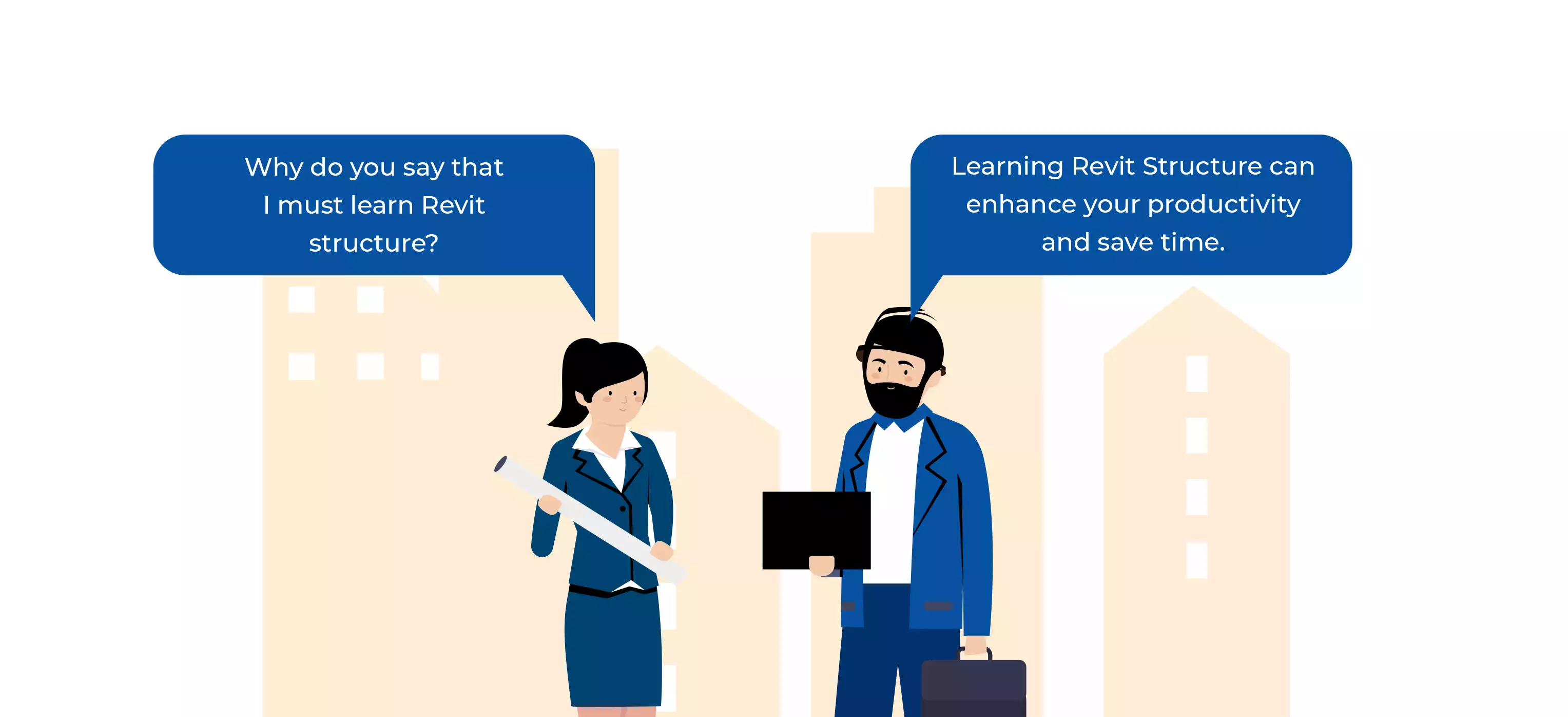 Shaheen M
Dec 19, 2024
Shaheen M
Dec 19, 2024

Autodesk Revit is a building information modelling program for structural engineers in the mechanical, electrical, and plumbing (MEP) departments, designers, and contractors. It was developed by Charles River Program, a 1997 startup that changed its name to Revit Technology Corporation and was later acquired by Autodesk in 2002. The Revit program enables users to create a building and all its parts in 3D, add 2D drafting elements to the model, and access building data from the building model's database.
Also Read: What is Revit Software?
The software application Revit Structure is a BIM (Building Information Modeling) application used by architects, engineers, and contractors to design, analyse, and detail structures. Learning Revit Structure is important because it's a powerful tool that can help you save time and money on your projects. Surely, Revit structure will continue to be a powerful design tool. Here is why you should learn Revit structure;
Here is a brief overview of each point;
The Revit Structure is three-dimensional modeling software architects and engineers use to create building models. The software is designed to help users visualize and manage the construction process. The Revit Structure has many benefits, including the ability to create accurate models. You can easily make changes in your design using the Revit structure. Any new data you upload changes the entire model. With this dynamic update, you can save time and avoid conflicts when trying to match information across numerous designs.
You'd constantly have to review these designs during the design stage to make little changes. This is a complex and time-consuming process, and it can lead to mistakes. Missing one drawing creates inconsistencies. Continual repetition reduces productivity and leads to redundant documentation. As a result, the project gets bogged down. The Revit BIM software allows you to centralize all that information, eliminating this repetitive work.
When it comes to producing realistic visuals, the Revit BIM software excels. You'll concentrate mainly on all the data you enter into the model. As a result, models containing all the information required to build real-world buildings are produced. Revit also gives you a lot of other tiny things you can do to enhance the appearance of your models to your clients. You can use it, for instance, to create landscapes for your models.
By taking project-based classes and learning how to make digital drawings, 3D models, sections, and details, you will obtain good hands-on experience with Revit. You will learn how to create floors, walls, windows, and doors in both plain and 3D views. You will be able to use what you've learned on your own projects at school or during an internship.
It's just as important to understand how to build your design as it is to know how to confidently express the design objective of your project. You can confidently display your work by honing your presentation skills with professional-looking elevations, renderings, and visualizations.
Also Read: Design Software for Architects
Revit is designed to work with BIM. Both Revit and BIM will be very important in the future. Revit helps designers design, simulate, visualize, and collaborate in order to capitalize on the advantages of the interconnected data within a BIM model. By learning Revit, you will gain confidence in manipulating the data with a BIM model and see how changes you make to one object in a model are automatically reflected throughout the design. Becoming comfortable with how your design data is connected will give you a distinct edge over your student peers and future coworkers that are more accustomed to working with 2D drawings.
We're bringing up internships again because they're significant enough. Even though you might not have the opportunity to enrol in an elective course at your school that teaches Revit until your third year, you might start obtaining internship offers in your second year if they request Revit experience. To be ready for any opportunity, you should start learning Revit around your freshman year. The more opportunities you'll have after graduation, the more internships, experience, and connections you have.
As an architect, problem-solving will be your primary responsibility. You'll learn how to use Revit's intelligent building components to handle those issues more effectively and with better outcomes. Additionally, you may leverage Revit's bidirectional associativity to immediately reflect changes throughout your model and improve cooperation with numerous users working on the same model at once.
Also Read: Advantages of Learning Revit Structure
Revit Structure is a crucial advancement in civil structuring and is transforming it. Revit structure Training in Dubai will assist you if you want to become an expert in the software. You will become a highly skilled structural engineer highly regarded in the industry, not just a better structural engineer.
Better outcomes translate into a stronger portfolio, giving you more options for your future professional life. If you have experience using Revit, you'll be more versatile and able to concentrate on producing your finest work because you'll be better equipped to handle different design software.
Also Check Out: Skills to Master Revit MEP

Shaheen is an expert Corporate Trainer in BIM, Architecture and CAD with over 8+ years of experience. His expertise includes advanced 3D BIM Modeling, Architectural Drafting and Detailing, and Interior & Visualization Design. Additionally, he offers tailored training programs specific to various industry needs. He has trained over 5,000 professionals in advanced modeling and design techniques.
Shaheen’s training expertise spans HVAC Design, Electrical Design, Tekla, Lumion, STAAD.Pro, AutoCAD 2D & 3D and Civil 3D. Through his hands-on teaching approach, Shaheen ensures that students engage with real-world architectural projects. His corporate training portfolio includes some of the top architectural companies in Dubai. He has trained professionals from universities, including Sharjah University, Ajman University and Canadian University, and companies such as KhanSaheb, HCTS, Silver Pool Technologies and many more. His practical industry experience enriches the training program's real-world value.